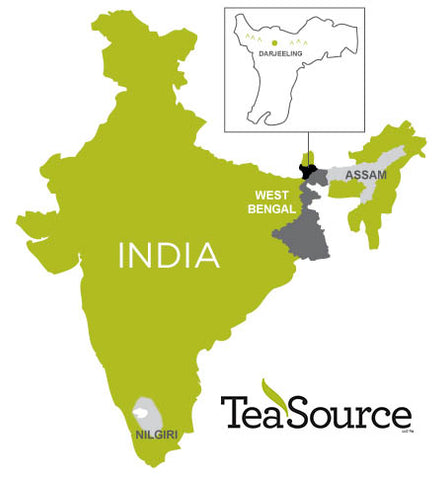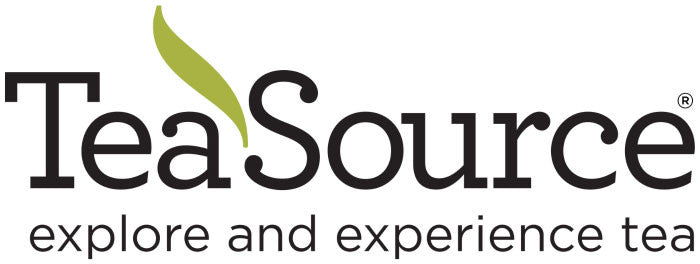
Tea pluckers in Darjeeling
Darjeeling: The Darling of Indian Teas
Typically “Darjeeling tea” refers to a black tea that is light to medium-bodied with fruity and floral notes, and perhaps a touch of briskness. The steeped liquor usually appears light golden to a darker bronze color with a strong fruity aroma. It is often considered one of the finest teas in the world.
For a tea to be called Darjeeling, it needs to come from the Darjeeling district, state of West Bengal, India. “Darjeeling Tea” is a legally protected geographical designation for teas grown and manufactured in this very specifically defined region “Darjeeling.” This situation is similar to the designation given “Champagne” which is a sparkling wine grown in the Champagne region of France. Sparkling wines grown in other regions of the world cannot be called Champagne.

Bill with the Chairman of the Darjeeling Planters Club, which was established in the early 1900's.

Bill with the manager of the Goomtee Estate in their greenhouse.
What does the word Darjeeling refer to?
Darjeeling is a really small region in northeast India.
The Darjeeling District is about 288 sq. miles.
Hennepin County, Minnesota is about 600 sq. miles.
Rhode Island is about 1212 sq. miles.

The word Darjeeling translates as “Thunderbolt Place.” Darjeeling is very close to Nepal, Sikkim, Bhutan, Assam, and Tibet. It is part of the foothills of the Himalayas.
Is Darjeeling tea rare?
Approximately 11,000 tons of Darjeeling tea are produced each year from the official Darjeeling region. Approximately 40,000 tons of tea are sold each year as Darjeeling. So at least 30,000 of those 40,000 tons are counterfeit. These counterfeit teas aren’t grown in Darjeeling. They may come from Nepal, Bhutan, Sikkim, Bihar Province, other parts of the state of West Bengal outside Darjeeling, and God only knows from where else.
11,000 tons of tea sounds like a lot, but not really. Each year the Assam region of India produces about 680,000 tons of tea.
So Darjeeling teas, relatively speaking, are pretty rare, prized, and they fetch very high prices.

Why are Darjeeling teas special?
Darjeelings are the highest elevation produced teas in the world. This higher elevation creates a different environment for the tea plant; different temperature ranges in the day and evening, different oxygen content in the atmosphere, different UV (ultraviolet ray) exposure for the plant, and many other differences. All these differences produce a different leaf and a unique flavor and aroma in the cup. The Chinese variety of the tea plant, Camellia sinensis sinensis, grows very well under these conditions.

Tea fields along the mountain side at the Margaret’s Hope Estate.
Darjeeling teas are also 100% hand-cultivated and produced; with a tremendous level of care, experience, and expertise in the cultivation, handling, and manufacture of these teas.

What is the best way to prepare Darjeeling tea?
It’s a black tea, so many people would say use boiling water and steep 3-5 minutes. We recommend using slightly less than boiling water and steeping for 2-3 minutes. This cup will be a little bit less astringent, maybe a little bit more sweet or fruity, but with a little less body. Experiment, have fun with different preparation techniques—it’s tea, not the holy grail.

Cupping tea at Margaret's Hope Estate.

Comments
My husband and I traveled in India, spent time in Darjeeling and Keorsong. We especially loved the Makabari estate and enjoyed all the fabulous tea in the region! Its such a special part of the world, having been there and now knowing how unique it is there makes the tea even more precious to us! It’s infused with the peaceful vibration of those majestic mountains, strong people and beautiful culture!
Truly a great description of Darjeeling teas. Thank you.
Incidentally recent production had not crossed 8000 T. Further, only 50% of that is leaf grade so we come to 4000T! Then only 40% of that is first and second flush, so 1600T. Then half is low elevation ending with just 800T of premium tea for the world!!
Thank you for sharing this interesting facts about Darjeeling teas.